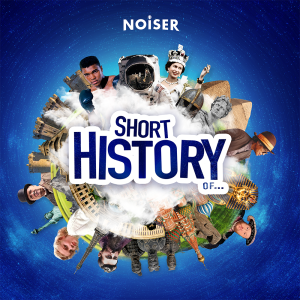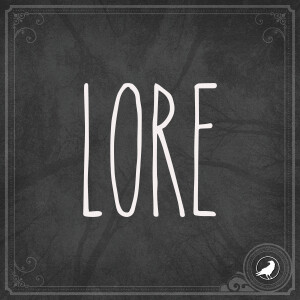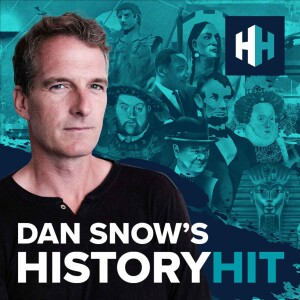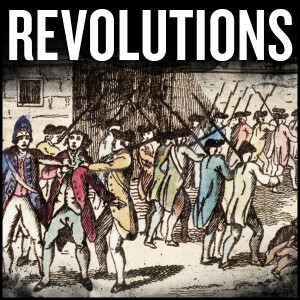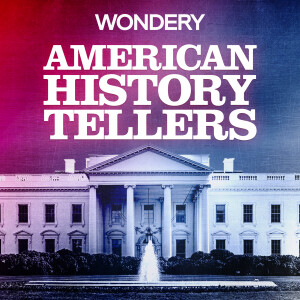

Read Beat (...and repeat)
https://feeds.buzzsprout.com/1950812.rssEpisode List

"Baseball's First Superstar" by Alan Gaff
When Christy Mathewson burst upon the scene with the New York Giants in 1900, baseball had a less-than-perfect image. It was a rowdy game played by roughnecks known for their consumption of alcohol and chewing tobacco, said Alan Gaff, author of Baseball’s First Superstar.Mathewson’s good looks and his quiet, easy-going manner made him a hit with the ladies, Gaff said. “Women came to baseball games,” he noted, adding that “opposing clubs would schedule Ladies Days for games in which Christy would pitch and women would come in throngs.”On the field, Mathewson racked up big numbers. In his first 14 seasons with the Giants, he won at least 20 games every season. In 1905, he led the Giants to a championship, winning three games in the World Series that year without surrendering a run.Gaff also provides a history of baseball’s growth in the early 20th century. The sport was heavily supported by the big newspapers of the day, especially those in New York. Sports sections carried accounts of big-league games that reached millions. As the game gained popularity, larger ballparks were required to accommodate the growing crowds that attended. In New York, the Giants started games just an hour after the closing of the stock market, encouraging the Wall Street crowd to frequent the ballpark.Mathewson was smart, said Gaff. He could recall situations with opposing batters years later in vivid detail. John McGraw, his longtime manager on the Giants, said that “Mathewson’s real greatness in the game was the example he set for young fellows and the impression he left on the minds of the public. He gave our profession a dignity that it needed and was slow to acquire.”Before achieving fame as a baseball player, Mathewson was a member of the Bucknell University football team, where he starred as both fullback and drop kicker. He spent three years at Bucknell before becoming a professional baseball player. The school’s football stadium is named after him.

"Mrs. Cook & the Klan" by Tom Chorneau
True crime accounts are all the rage these days. But Tom Chorneau didn’t want to just add another cold case to the national docket.Instead, the unsolved murder of Myrtle Cook in 1925 is related to political forces flowing through the state of Iowa at the time, with Chorneau, a former reporter, explaining the state’s near-constant battle over temperance.During the first half-century of statehood, Iowa lurched from wet to dry eight times before Prohibition was ratified in 1919. Cook was president of the local temperance union when she was shot through the heart.Chorneau speculates that it might have been something she saw that cost the woman her life. In any event, the shooting made the front page of the New York Times. The next day her funeral made national news when a small army from the Klu Klux Klan gathered in town on her behalf.Cook wasn’t just the head of a temperance union but an informant for the law. “Myrtle spent hours at her parlor window, which had a clear view of the Rock Island Railroad station and the dive café next door,” noted Chorneau, adding that “Myrtle kept good notes on the comings and goings of the bootleggers and their customers, who regularly conducted their business at the depot.”Cook may have even realized that her life was in jeopardy. In a conversation with a friend shortly before her death, “Myrtle didn’t tell Marie what or whom she had seen but ended the conversation with a chilling remark: ‘I believe this work will be the end of me.’” related Chorneau.Prohibition wasn’t the only force creating change in Iowa. You also had the women’s suffrage movement, the issue of slavery, and the railroad industry all moving across the state. In 1925, Al Capone took over as gang boss in Chicago, creating a ripple effect across the Midwest, especially when it came to bootlegging operations. Chorneau even raises the possibility that Capone himself may have had a hand in the Cook murder.

"Rebranding the Western: A History of Comics and the Mythic West" by William Grady
How did you learn about the American West? Books came first. Reading material included notorious dime novels that made legends of Buffalo Bill and Jesse James. Newspapers and magazines, meanwhile, focused on the American West in the 19th century as railways turned the frontier into an attraction for tourists who watched herds of buffalo disappearing while Native Americans were being herded onto reservations.Western history was recorded in so many movies—from silent films like On the War Path (1911) and The Indian Massacre (1912) to John Ford epics like Stagecoach (1939) and My Darling Clementine (1946) along with High Noon (1952), A Fistful of Dollars (1964), Blazing Saddles (1974) and hundreds more. Between 1947 and 1950 Westerns made up 30 percent of major Hollywood releases.Maybe you got your first taste from television on shows like Bonanza, Maverick, Cheyenne, or Gunsmoke? On radio, you might have followed the exploits of the Lone Ranger or the Six Shooter with Jimmy Stewart.William Grady’s Rebranding the Western (University of Texas Press) surveys another medium that explored Western history: the comic. From the start of the 20th century, newspaper comic strips exploded in popularity. Western strips like Red Ryder and Lone Ranger blossomed in the 1930s along with Little Joe, a strip that ran from 1933 to 1972, following Joe Oak, a child who lives with his widowed mother on the family ranch managed by a former gunslinger. Grady notes that Westerns were part of the comic book craze that evolved in the 1940s and 1950s. That was a period when comic books were sold everywhere: in grocery stores, on newsstands, and at the corner drugstore. “Calculations on the monthly sale of comic books averaged anywhere from 60 million to 100 million across the postwar decade (1945-1954),” he said.More than 3,400 different Western comic book titles had been printed by 1959, said Grady. “Every comic book publisher, from Ace Magazines to Ziff-Davis Publications, offered a slew of Western titles that featured thrilling adventure tales about cowboys, gunfighters, outlaws, and historical frontier figures,” he said.Along with Kit Carson, Indian Scout, and Two-Gun Kid, you had Western romance titles like Western Love Trails and Cowgirl Romances. But the comic-book trail wasn’t limited to 19th-century frontier days. Roy Rogers and Gene Autry, for example, worked on the Cold War frontier of the 50s, searching out missing atomic scientists or combatting Russian saboteurs, noted Grady.Western comics reflected the times, said the author. Lobo, an African American hero, arrived in the 1960s while Jonah Hex, a disfigured antihero burst onto the scene in the 1970s. Also in the 70s, Marvel Comics launched Red Wolf, a series where Johnny Wakely, a Cheyenne Indian sought justice for all people on the frontier.The Western continues to evolve, Grady stated, citing The Walking Dead ( a TV show based on a graphic novel) and Yellowstone (a neo-Western) as contemporary examples of Western-type storytelling. “On one hand, the image of the Western has remained unchanged for over a century. On the other, the genre has regularly experienced transformations that permit it to maintain its compelling hold on audiences,” he said.

Pink Cars & Pocketbooks: How American Women Bought Their Way into the Driver's Seat" by Jessica Brockmole
Chrysler released a special edition of the Dodge Royal Lancer that Chrysler in 1955 called LaFemme. Marketed as “a car for the modern woman,” the model offered a pink-and-white color scheme along with matching accessories. There was only one problem: women didn’t buy it. Chrysler soon dropped the concept due to low sales.That’s just one of the examples that Jessica Brockmole details in her book, Pink Cars and Pocketbooks, a study of U.S. auto industry efforts to win over female customers through the 20th century.Brockmole points out that women were a factor in the acceptance of the automobile in America—almost from the start of the 20th century. Pictured in the book is a 1903 advertisement for Oldsmobile with a headline, “Good Bye, Horse.” A lady driver is shown waving goodbye to a faithful steed standing behind a fence. “Any lady who understands a sewing machine can drive this graceful Runabout,” notes the ad copy.While automotive history traditionally followed a male orientation with an emphasis on speed and power, women were on the scene, noted Brockmole. “The percentage of driver’s licenses issued to women tripled between 1922 and 1931. Among the consumer homes surveyed, women were driving in over half and, in many of those households, more than one woman drove the family car,” she stated.In a 1935 study, women made up one-third of U.S. drivers on the road but their “sphere of influence” impacted two-thirds of all car sales, said Brockmole.Women, used to the vagaries of the fashion industry, weren’t taken aback when Alfred Sloan of General Motors transformed the automotive industry with the concept of planned obsolescence, the launching of “new” car models annually, she said. The idea of making minor design adjustments while offering color and ornamental changes brought car companies into the realm of fashion, the author noted.Style became substance as industrial designers like Raymond Loewy and Norman Bel Geddes were hired by automakers. Brockmole said Dorothy Dignam, an ad executive with the Philadelphia ad agency, N.W. Ayer & Son, helped Ford Motor Co. understand that lines were everything in the 1930s. Dignam outlined ways Ford could promote new models to women concerned with line, style, and appearance, said Brockmole.In the 1950s, Charlotte Montgomery wrote a column in Good Housekeeping called “Woman and Her Car,” expressing the viewpoint that women were interested in automotive fundamentals, not just a car to match a spring outfit, the author noted.Brockmole cited Ms. Magazine as an example of promoting a new spirit for women in the 1970s. A woman’s place was no longer solely in the home as working women grew in number and stature, she said. Other periodicals followed providing specific information to women about cars.A study of the relationship between women and the auto industry is a story with a happy ending, noted Brockmole, adding: “Despite women’s messy history with the automobile, they have claimed the knowledge, the voice, and the confidence to define that relationship for themselves.”

"Maya Wisdom and the Survival of Our Planet" by Lisa Lucero
Much is made of the temples and striking artwork of the ancient Maya. Justifiably. Ever since U.S. travel writer John Stephens and British artist Frederick Catherwood explored the ruins of Copan in Honduras, publishing Incidents of Travel in Central America in 1841, the world has been aware of the “lost world” of the Maya.Stephens’ dramatic accounts and keen insight at what he found along with Catherwood’s meticulous engravings at numerous Maya sites proved to be a revelation. The public learned about structures like the Temple of the Sun and the Monument at Quirigia, of pyramids and plazas, of carvings and hieroglyphics, of the grandeur of a culture that didn't just exist in a harsh environment for more than 4,000 years but flourished.Much has been learned since Stephens and Catherwood wielded machetes to cut their way through the area of the world now known as Mesoamerica. We now know the Maya were not only builders, farmers, artists, and warriors--but masters when it came to a sustainable lifestyle. Lisa Lucero, a professor of anthropology at the University of Illinois, has investigated Mayan life in Belize for over 35 years. Her book, Maya Wisdom and the Survival of Our Planet, suggests Mayan accomplishments weren’t limited to architecture and art.“Maya reservoirs at the hundreds of cities supplied millions of people for over 1,000 years,” she said, referring to a period that encompasses the Classic Maya period (250 to 900 A.D.) How did they keep water clean enough for drinking? Lucero talks about the aquatic plants the Maya cultivated to maintain water quality in the same manner as constructed wetlands cleanse soils. “I love talking about water lilies,” she said, referring to sensitive plants that can only grow in clean water. Maya kings (one ancient pot pictured in the book shows a king with a water lily headdress) had to be water managers before anything else. In times of drought, maintaining an adequate water supply for a growing population became increasingly difficult, said Lucero. Sustained droughts finally proved calamitous, forcing families to pack up and move, she said.While many Mayan cities were already abandoned a thousand years before Stephens and Catherwood arrived, Lucero doesn’t view the exodus as a huge mystery. “People focus on the collapse of the Mayan kings (by 900 A.D.). They did disappear. But the people just moved on. They voted with their feet,” she said.The very fact that the Maya were able to maintain cities in a jungle environment for so long without the technology we now hold in such high esteem is testimony to their understanding of environment and an ability to use the plants, animals, and earth to create what we call a sustainable existence today.The fact is the Maya didn’t disappear, she said. “More than 7 million Maya live today—some in Illinois,” said Lucero. “The Maya have adapted to many changes over the millennia—demands from Maya kings, Spanish and English colonial rule, and massive droughts. They continue to adapt today in Central America and elsewhere, and many of their ancestral practices are alive and well,” she said.The problem of climate change requires learning from the Maya, said Lucero. “We are all connected. We are part of one huge family and we need to take care of one another,” she said.
Create Your Podcast In Minutes
- Full-featured podcast site
- Unlimited storage and bandwidth
- Comprehensive podcast stats
- Distribute to Apple Podcasts, Spotify, and more
- Make money with your podcast




